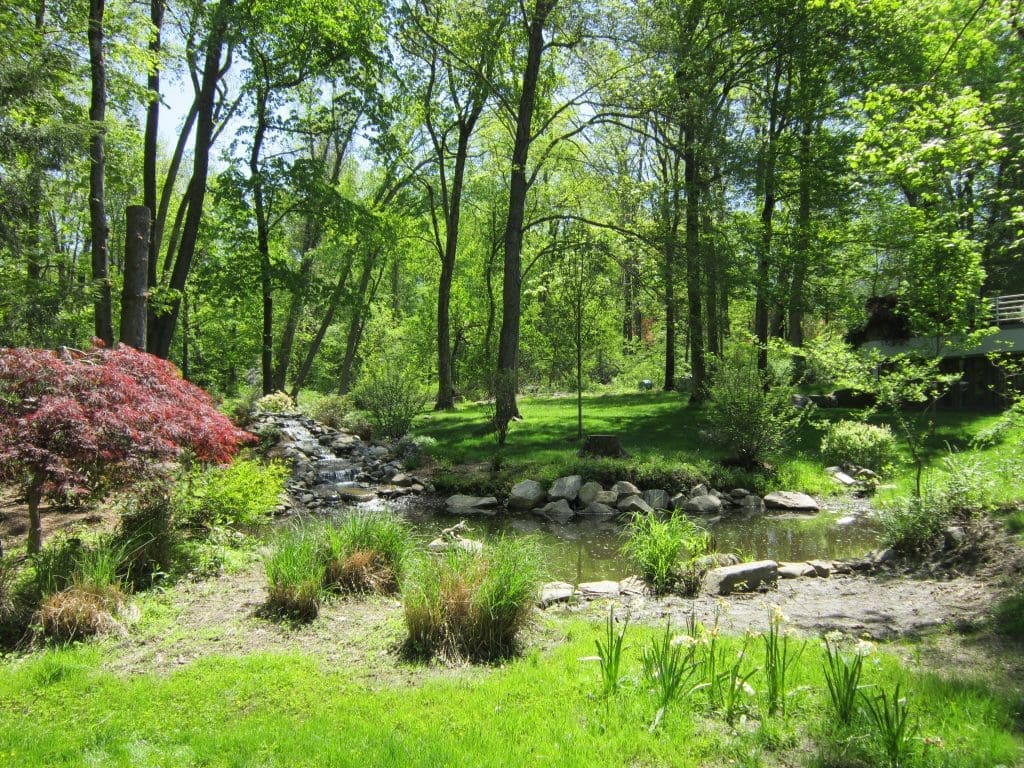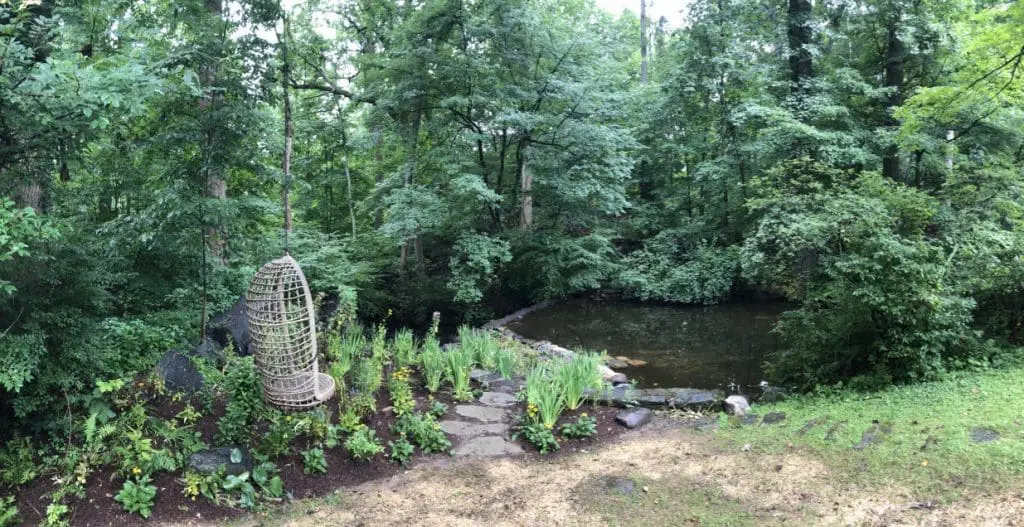We need to consider the real world we live in. This means that in the northeast we are entering our fourth record wet year. The extraordinary height of the water table in southern Westchester County is simply unprecedented. This has resulted in storm water and drainage problems where there historically were none. Before we engineer new solutions and plant plants in a hydrology which may be an abnormality, we need to understand what factors are consistently contributing to ground conditions and what may be temporal.
Analyze Watershed & Inventory Stormwater Infrastructure
To that end proper, site engineering and analysis should be performed. This should include examination and inspection of all infrastructure features, utilities etc., to determine effective function. Flow paths, dry-wells, catch basins and all subsurface drains should be located and plotted. Overall adjacent watershed sheet flow should be considered in storm water management for property in question before surface water renovation is attempted. Conduct a percolation test to determine the rate of stormwater infiltration into the soil — this will inform your design solutions, for example if a rain garden or bio swale is feasible.

Planning our Landscapes for Climate Change
We cannot anticipate acts of God since we are not currently in direct communication with her ! While the future of weather patterns is uncertain, climate change is not. The continued negative impact and contamination of our landscape environment and watersheds is devastating. Even without species extinction, we have no system in place to track impacts on beneficial species.

What we do know is that things on the ground are not getting better from a biological health and ecological perspective (see: Insect Apocalypse, UN Reports Nature’s Decline ‘Unprecedented’, Pollinators in Peril) . If we are going to substantially improve quality of life within the landscape experience, we need to create artistic expressions of nature which also conserve resources, while providing ecosystem services to improve the landscape environment for human health.
Our soil, air and water are all polluted on varying levels depending on the site and past land use and abuse.
In addition to soil remediation, we need to consider actual phytoremediation as part of early first phase restoration. Plant migration, invasion ecology, bioengineering, and permaculture solutions should all be entertained in producing a viable development and sustainable stewardship plan.

Residential, Workplace & Community Level Landscape Design for Climate Change
We should be excited, energized and inspired to engage in courageous experimentation !
We simply have more to gain than lose by investing in our good intentions and intuition.
Hope is not the answer, faith and action are required to effect real, authentic change.
We need to start at home, expand to our work places and last attack our public spaces.
Not the other way around.
Instead of holding beauty as the highest authority, we should be examine our landscape functionality. Can it produce food, create habitat, absorb and filter water, sequester CO2? A well-designed, ecological landscape can achieve all these goals.
We need to face the ugly truth that we are presently continuing on the course of our own destruction by contaminating and polluting every vestige and element of the natural world.
What will it take to see the
The beauty we possess…before it disappears.
So as we say every day….do something !
Read our previous blogs on this topic:
What the UN Climate Report Means for Landscape Designers [Part One]
Landscape Design to Halt Climate Change: Designing Carbon Sinks [Part Two]
Sustainable Stewardship: Long-Term Management Plans for Multi-Acre Properties
—
Jay Archer
Green Jay Landscape Design
Where Design Meets Ecology
914.560.6570